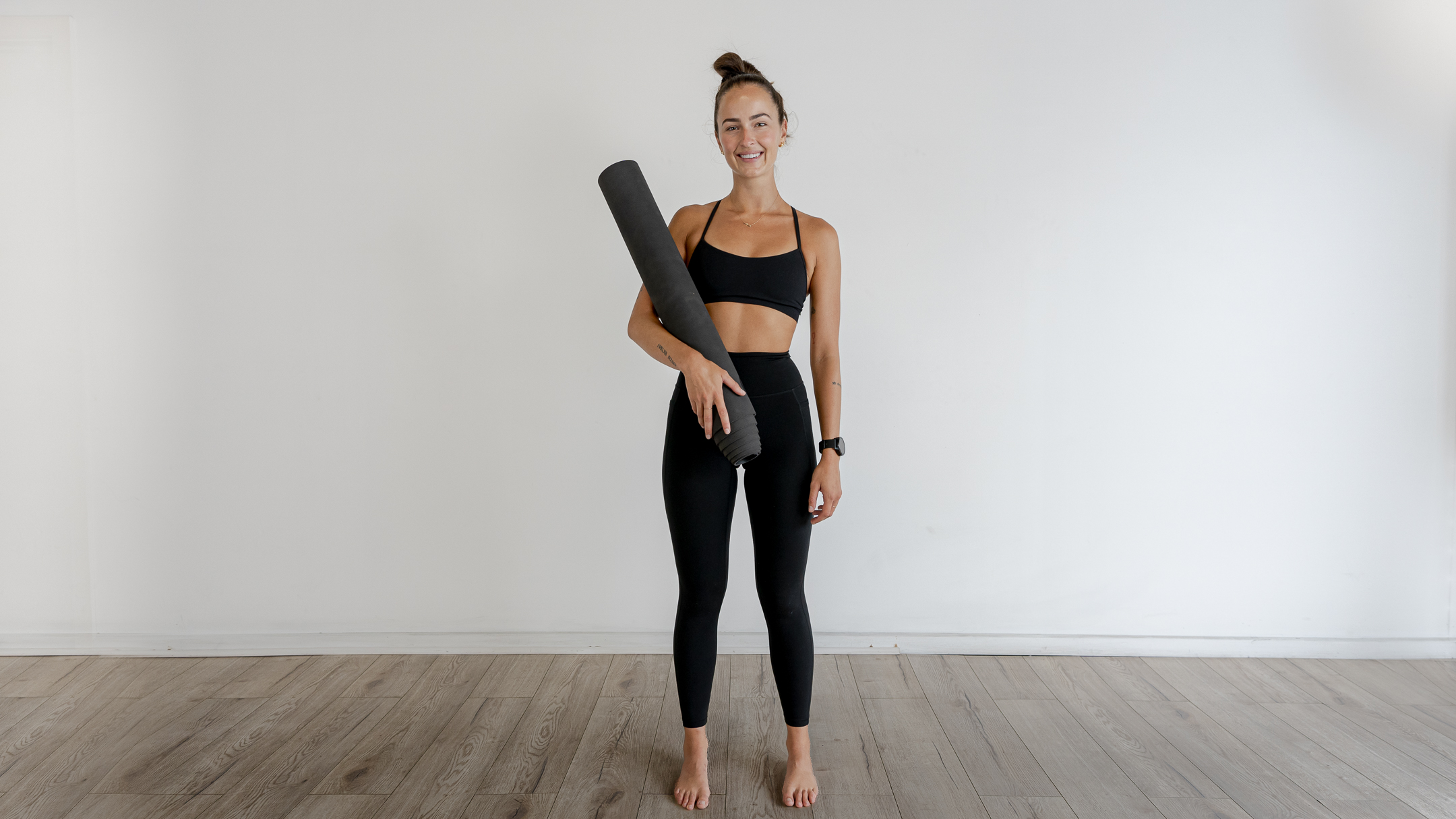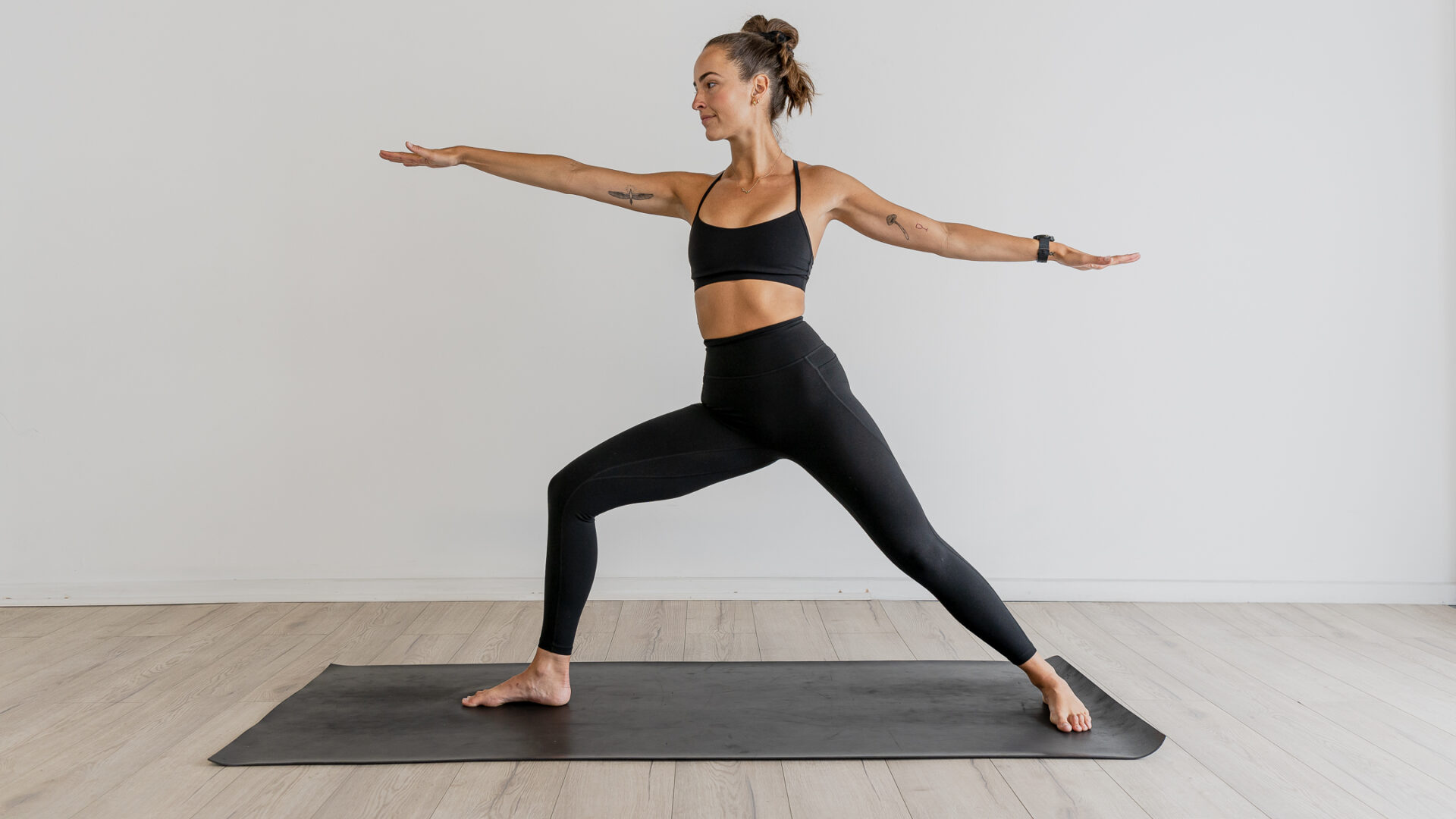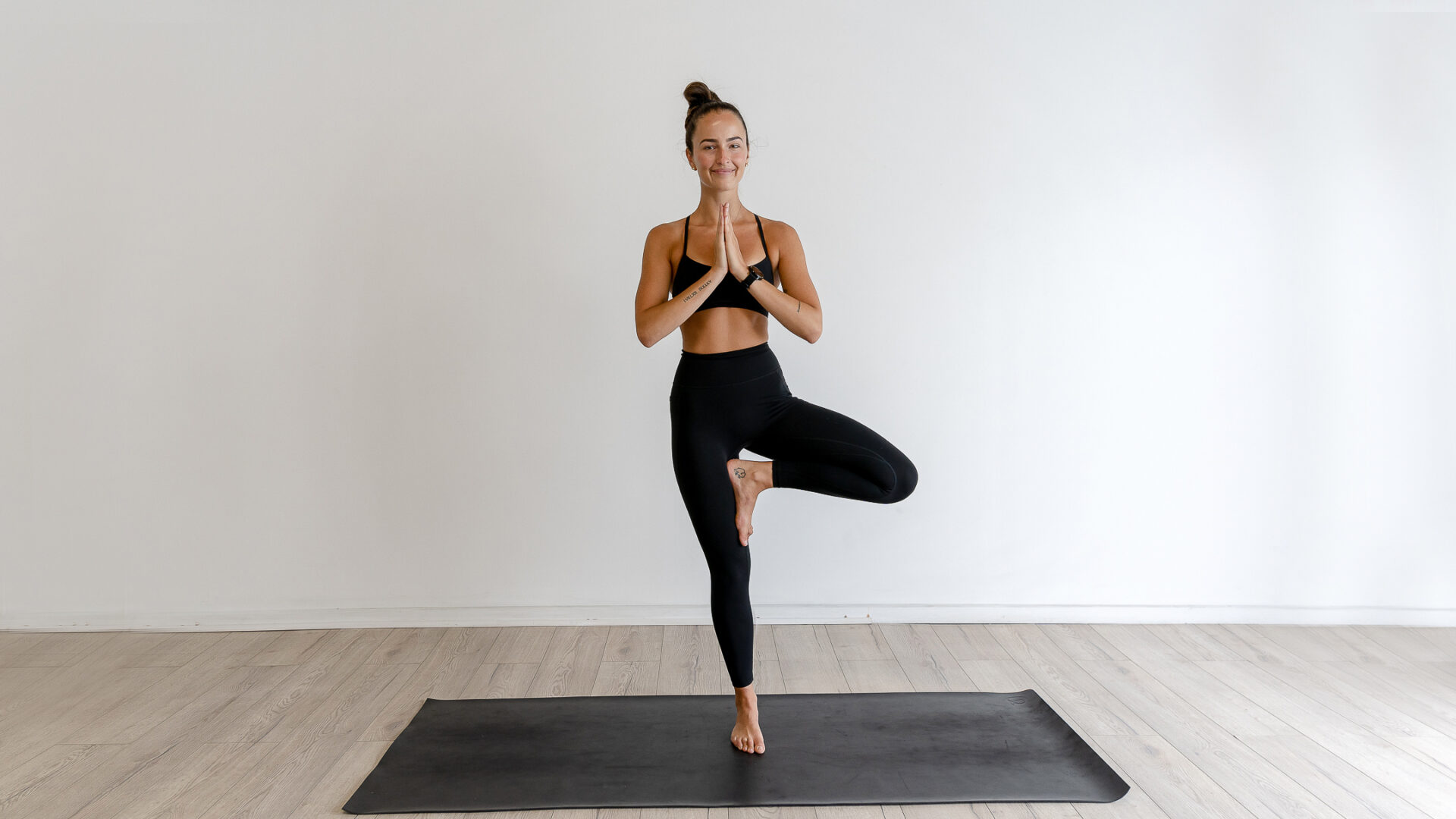Downward-Facing Dog (Adho Mukha Svanasana): This foundational pose stretches and strengthens the entire body, targeting the hamstrings, calves, shoulders, and upper back. Practising Downward-Facing Dog before weightlifting or cardio helps warm up the muscles, increases blood flow, and improves overall body awareness and alignment.
Warrior II (Virabhadrasana II): Warrior II pose opens the hips, strengthens the legs, and improves stability. It activates the core, glutes, and quadriceps while promoting focus and concentration. Incorporating Warrior II into your routine enhances lower body strength and stability, benefiting exercises such as squats and lunges.
Bridge Pose (Setu Bandha Sarvangasana): Bridge pose activates the glutes, hamstrings, and lower back muscles, while also stretching the chest and shoulders. It helps improve hip mobility, core strength, and spinal flexibility. Including Bridge Pose in your routine supports exercises like deadlifts and hip thrusts, as it targets the posterior chain muscles.
Tree Pose (Vrksasana): Tree pose challenges balance and stability, while also strengthening the muscles of the legs and core. It enhances body awareness, concentration, and mental focus. Practising Tree Pose can improve stability during weightlifting exercises such as squats, overhead presses, and single-leg movements.
Child’s Pose (Balasana): Child’s Pose is a restorative pose that promotes relaxation, stretches the hips and lower back, and releases tension in the shoulders and neck. It serves as a calming and restful posture between intense cardio sessions, allowing the body to recover and regain focus.
Corpse Pose (Savasana): Savasana is a relaxation pose that concludes a yoga session. It allows the body to fully relax, promoting physical and mental recovery. Incorporating Savasana after weightlifting or cardio workouts helps reduce muscle tension, promotes recovery, and enhances overall well-being.



